Fancy spending a year living in one of the most beautiful and remote places in Britain with a group of like-minded, nature-lovers? No rent, electricity or phone bills. You'd be mad to say no to that. Or would you?
According to the press, Eden turned into a real-life 'Lord of the Flies'. It certainly had its low points and the media honed in on the difficult group dynamics, but there was much more to the experience beyond the cameras. Personally, I feel it is important to forget the bullying and remember the achievements that came with adapting to a unique and spectacular natural environment.
Adapting to Eden life
I was surprised to find the physical aspects of living in a challenging natural and often harsh environment quite easy (having lived on Skye, the West Coast weather has never been a problem for me), however it was the emotional and social aspects that were much harder. Being not just away, but unable to contact friends and family was tough.
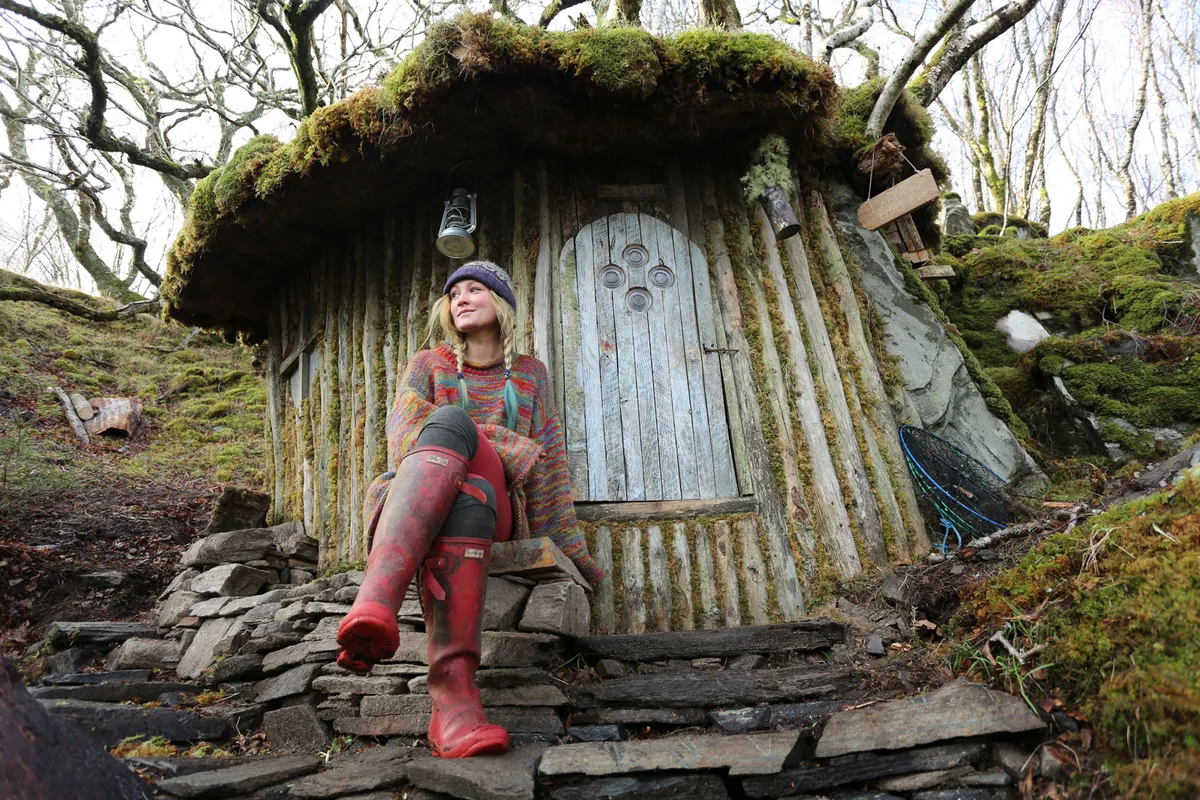
Hardships aside, by the end of the project we were living in a series of self-built homes, we'd learnt how to care for animals, how to grow food and how to live comfortably through a winter without central heating.
Learning to slow down
After a year without electricity, gadgets or even loo paper we had each fallen into daily routines that were time-consuming but essential. The landscape and wildlife became a backdrop to our home-life – washing dishes in a postcard-pretty waterfall soon becomes as everyday as standing at the kitchen sink. However, we quickly realised how much we take for granted, especially the modern time-saving gadgets that we barely gave a second thought to before. Gadgets such as lighters, washing machines, gas hobs, kettles save an incredible amount of time.
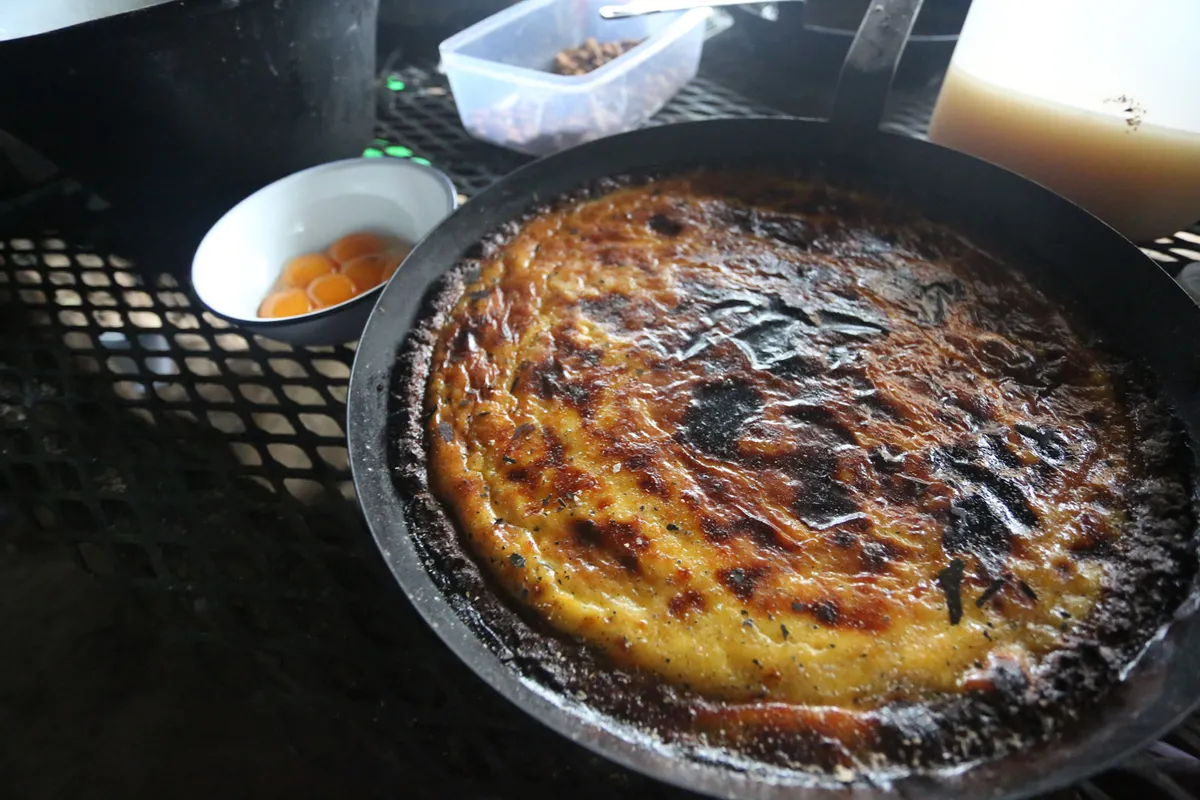
Take something as simple as making a cup of tea. It starts with collecting firewood, chopping logs and lighting a fire. Then you have to fetch fresh water to fill the kettle. If you don't like black tea, you'll have had to visit the goats in the morning for fresh milk. A freshly-lit fire takes a long time heat water; it could easily take over an hour to do something that takes just a couple of minutes in an electric kettle. We're so rushed in modern society, it was refreshing to be forced to slow down.
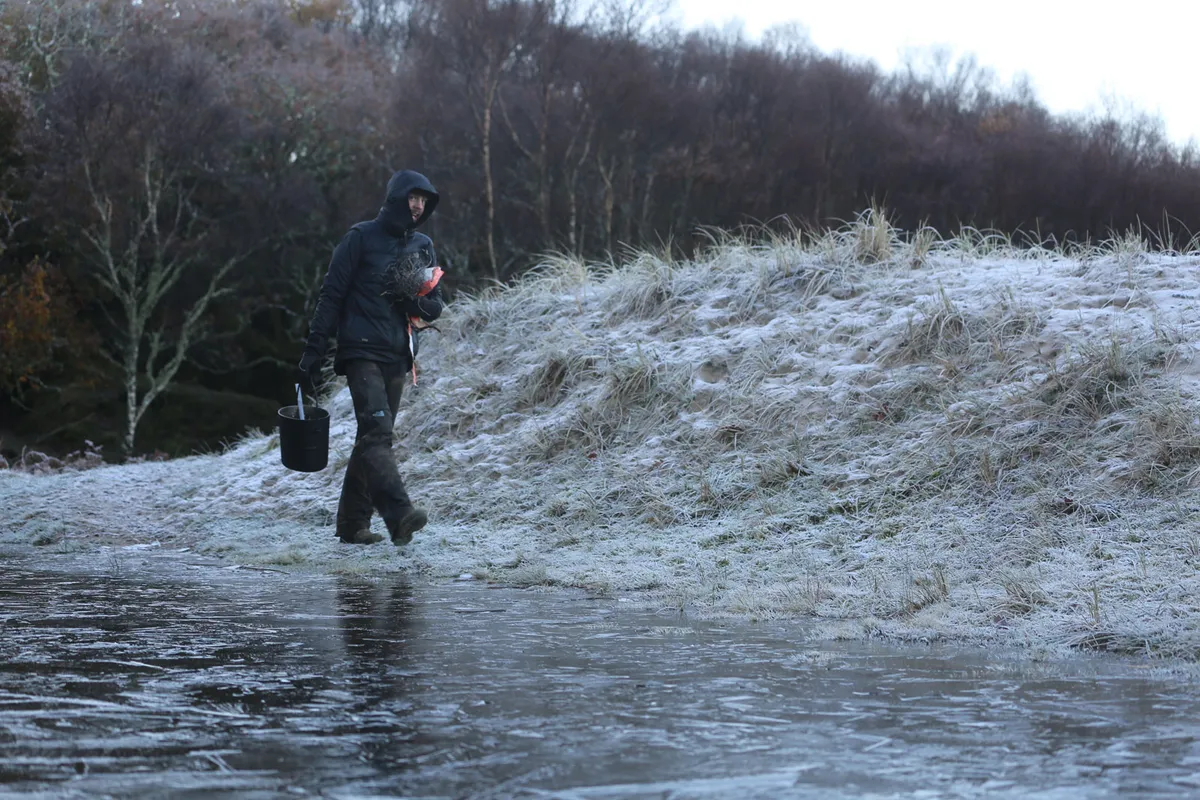
Farm life
The Eden project began with 23 people, but by December we were down to ten. My partner, Rob the vet, had left and I took up his role of overseeing 'The Farm' for the remaining winter months. Taking care of the animals was obviously a daily task (twice or thrice daily, to be precise), but unlike some of the other chores, the big difference was that it was great fun. Living so closely with wildlife was never dull. Sometimes we'd wake to find a chicken under the bed or a goat on the roof, and in rutting season you had to be careful when popping outside to brush your teeth before bed in case you startled a boisterous stag. These wild interactions never lost their charm but they soon became normal.
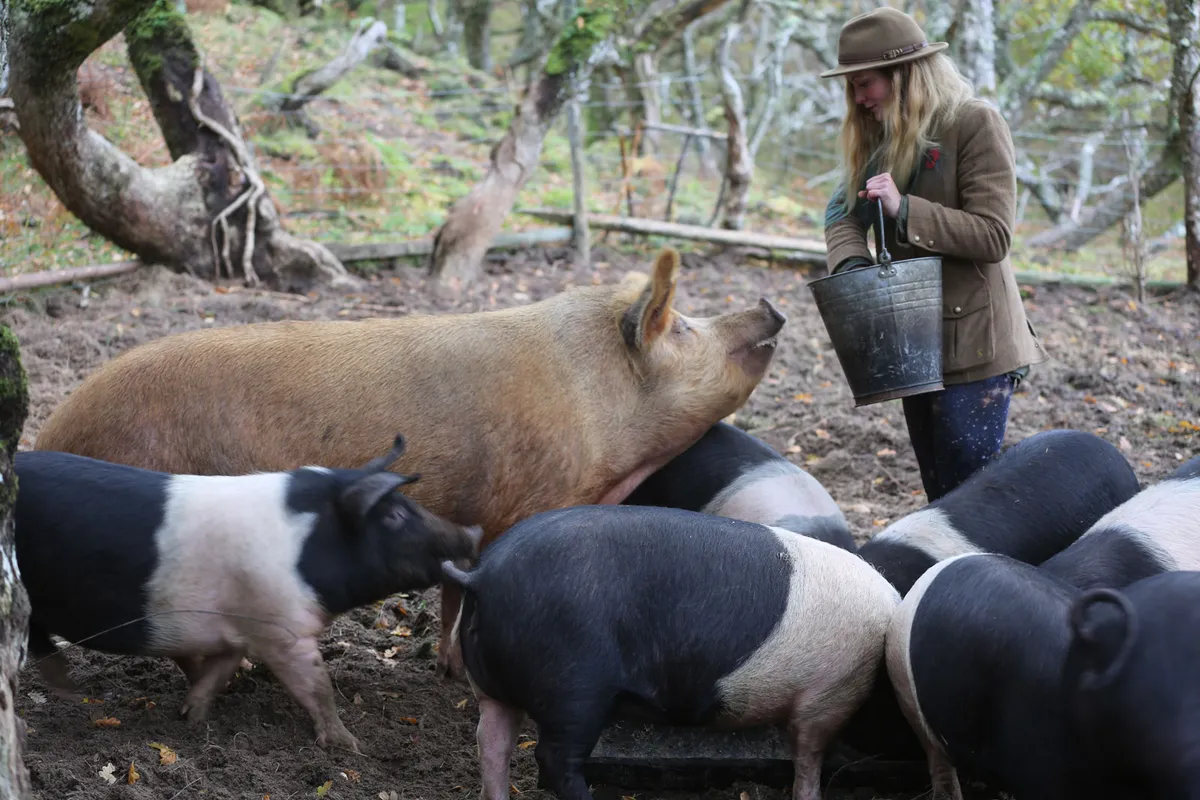
Working with the animals was one of the most rewarding parts of my Eden experience. We had chickens, goats, pigs and a flock of sheep. Each creature had a different character and it was a joy to look after them and be rewarded each morning with freshly laid eggs and warm milk.
In the winter, fixing the animal pens after bad weather became a continuous chore, especially when the piggies got a taste for exploring the woods. With makeshift materials it became a kind of 'Whack-A-Mole' job, where you would mend one fence hole only to turn around and see a wobbly piggy bottom squeezing out of a new one.
Although it was glorious to watch them trotting about we couldn't let them be completely free-range. The landscape was unforgiving; we'd already lost a sheep and lamb to the bogs. It would be a tragedy to lose another animal. I remember a particularly stressful day where I returned to the pig pen to find it empty. I searched bog and wood, sand dune and pond without luck. If they didn't return before sunset I'd have to go out with a torch. Feeling defeated and tired, I bundled up a towel and some soap and stomped off to the beach. Nothing like a dip in the sea to ease tired muscles and wash away the tension. The sun was dipping behind the hills of Rum in the distance and the sand was chilly as I stripped off and splashed in. I dunked under and worried about the pigs. As I came back to the surface, I turned to the beach to see a neat row of five solid little figures lined up at the waters edge. Five cheeky little piggies watching me quizzically. Against common sense I became hopelessly attached, especially to our affectionate nanny goats and those naughty pigs.
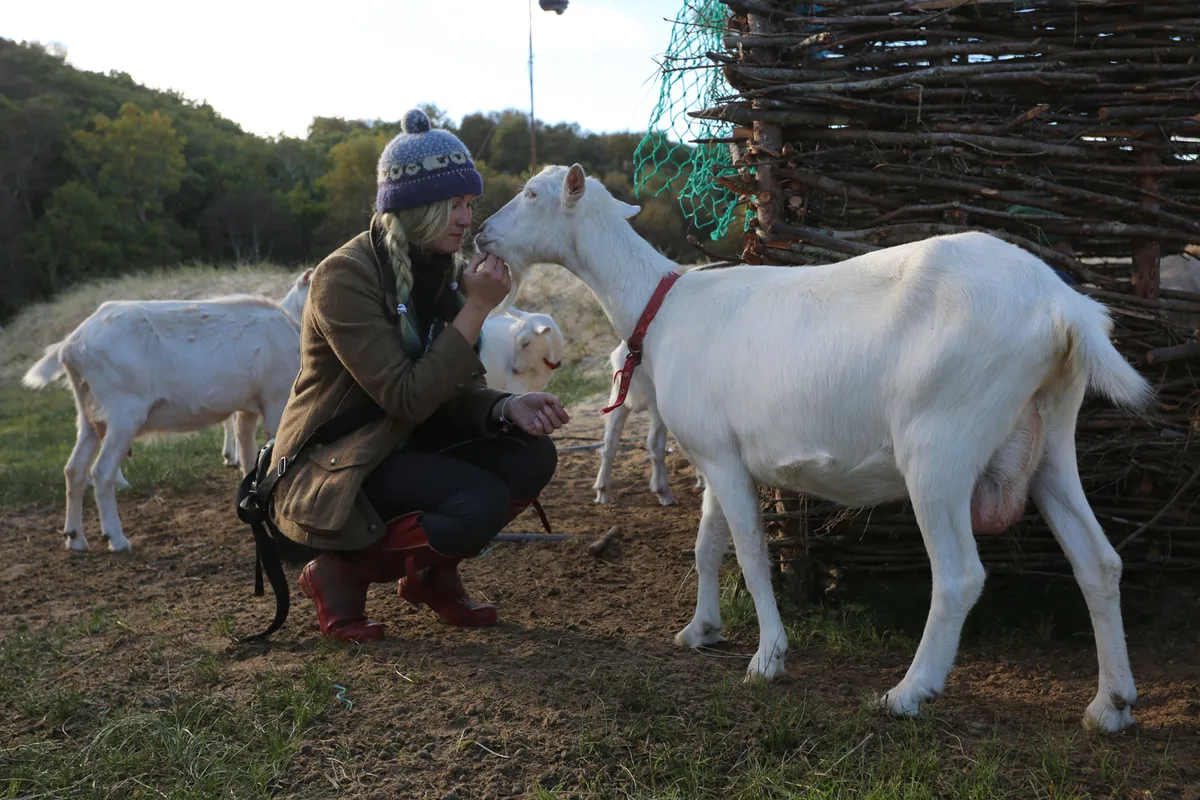
Inspired by the landscape
As the months passed and people left, the general tasks were shared by a smaller group and spare time became more scarce. However, between chasing the pigs and chopping logs we did find the hours to enjoy our natural home. Some people read, some whittled and others wrote. One of the last three remaining ladies became an expert at red squirrel-spotting.
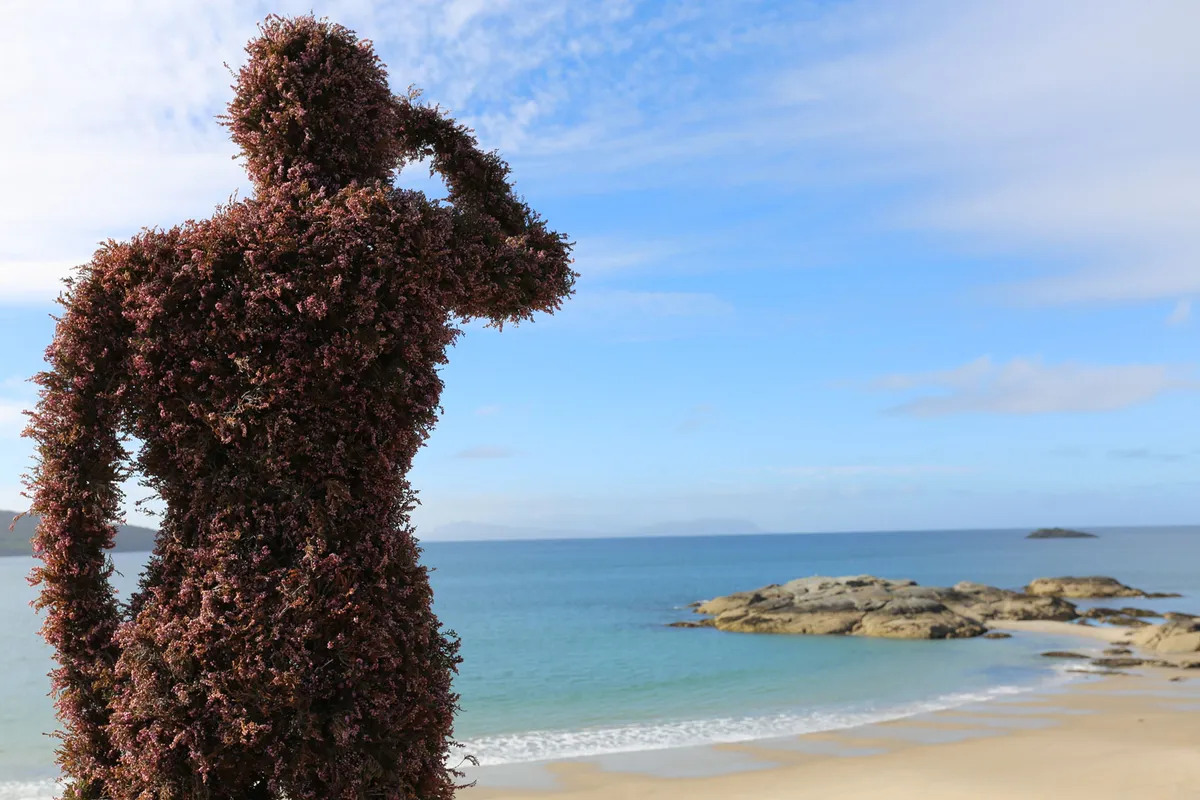
My snatched time was for being creative. Although my main field has always been painting and drawing I felt myself drawn to the natural materials at hand and I started to build sculptures in response to the landscape. There was a stag made from moss, a whale tail made from washed up fishing gear and, my favourite, a 7ft woman made from heather who gazed out to sea towards Skye. I was particularly touched when, after the project had finished, a local fisherman approached me and promised to maintain her after we'd gone. The land had sustained us for a whole year, so it felt important to leave something more beautiful than just tree stumps and ashes.
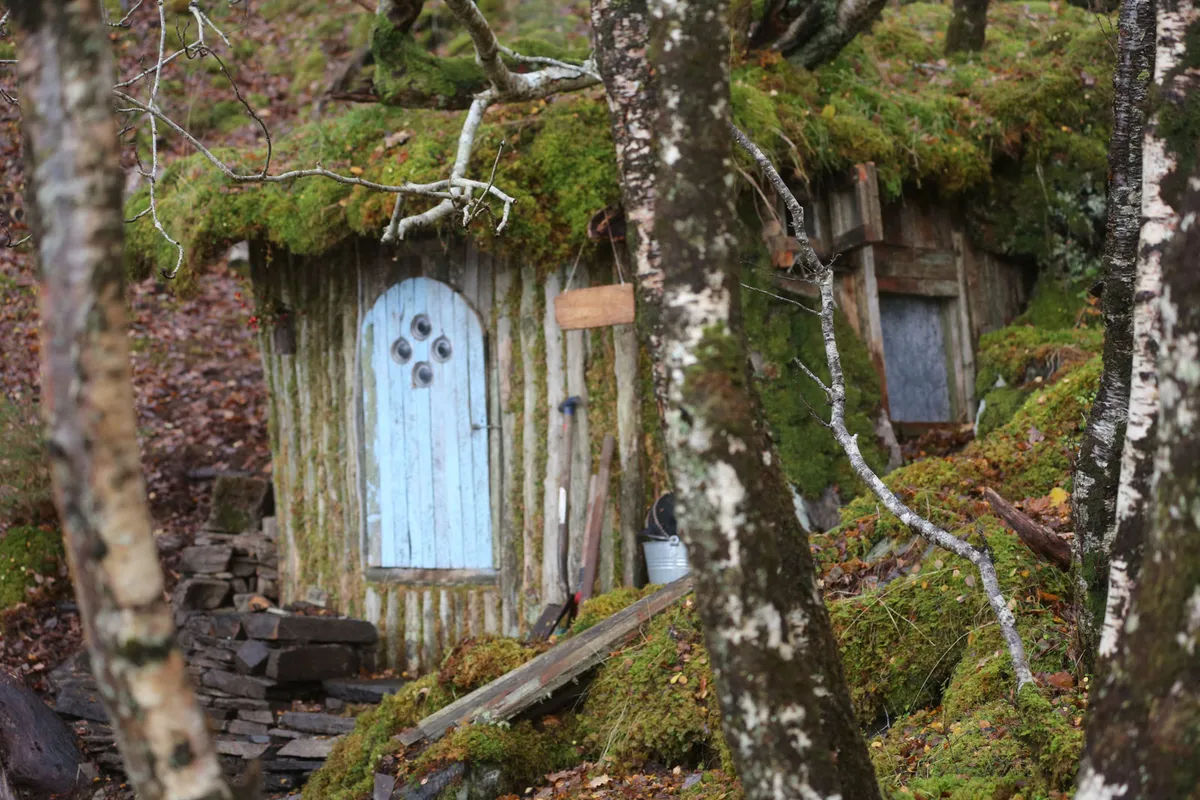
That said, my proudest creation was the home that I built. Because we were living in such an unusual situation I wanted to create a dwelling that was as extraordinary as the experience.
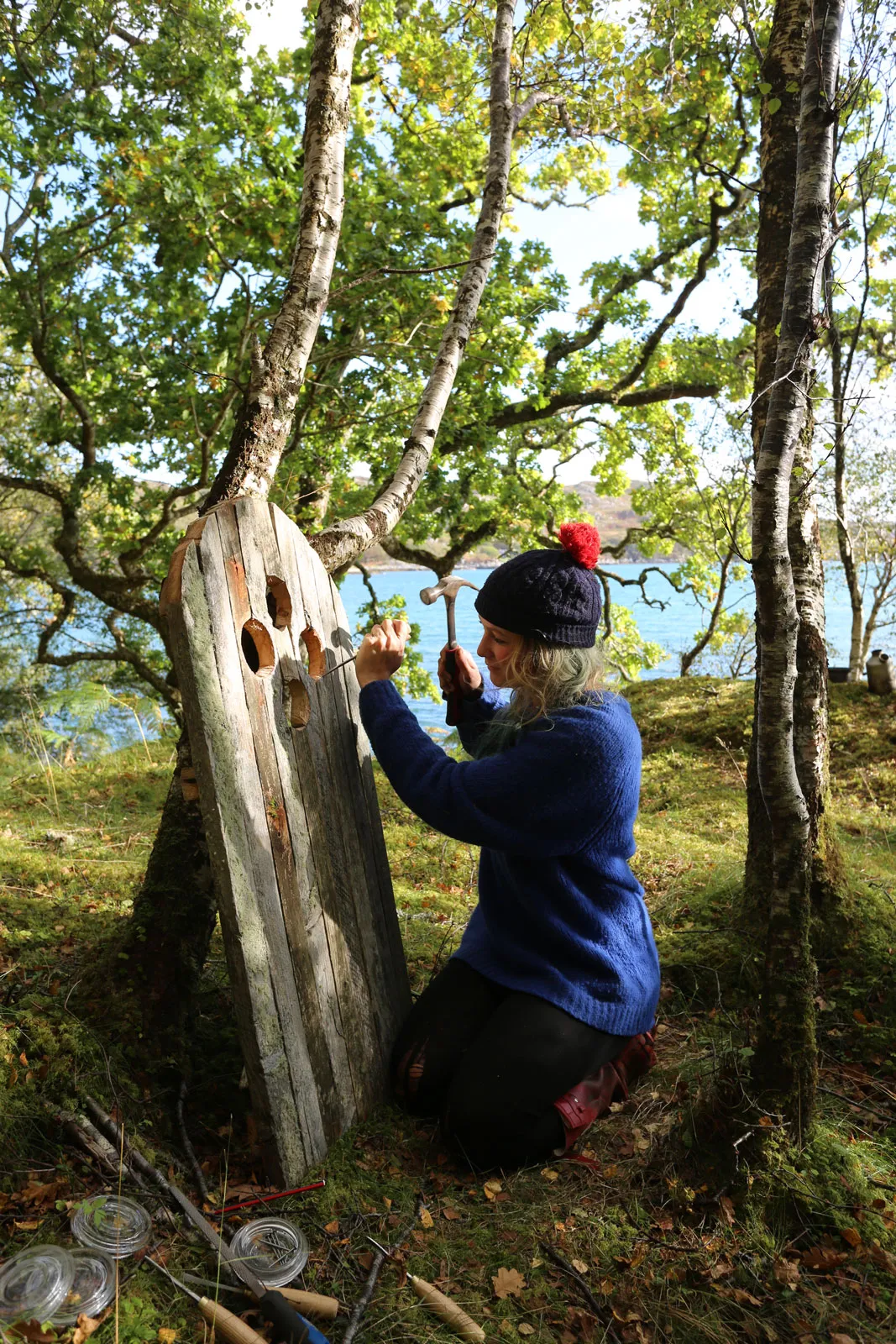
I chose a place where oak woodland met the coast and, with Rob's help, began to collect materials. I'd chosen the location for it's natural beauty, and as I felt it was important to keep the place as untouched as possible I didn't want any trees chopped down in the making of it. We gathered stones from the shore and reclaimed posts from an old deer fence for the walls.
As it swiftly took shape we nicknamed it ‘The Rabbit Hole’ after Lewis Carroll’s ‘Alice’s Adventures in Wonderland’, although the Hobbit Hole would have been apt in reference to the moss roof and round door and windows.
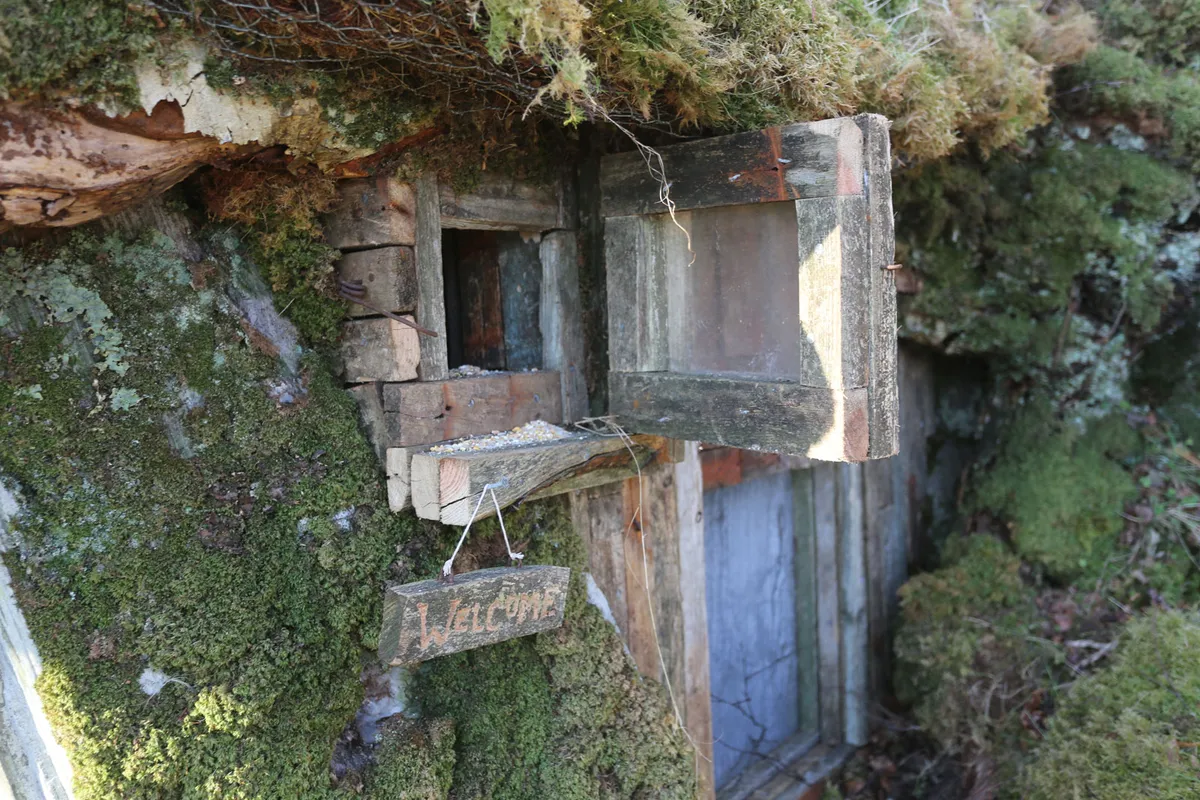
Whilst we built we were often accompanied by a bold little robin. He became such a regular feature that Rob designed a special little hinged window to let him inside once we'd sealed the roof on. It was a great joy through the dark winter months to have this jolly little fellow sitting on the desk as I went about my daily tasks.
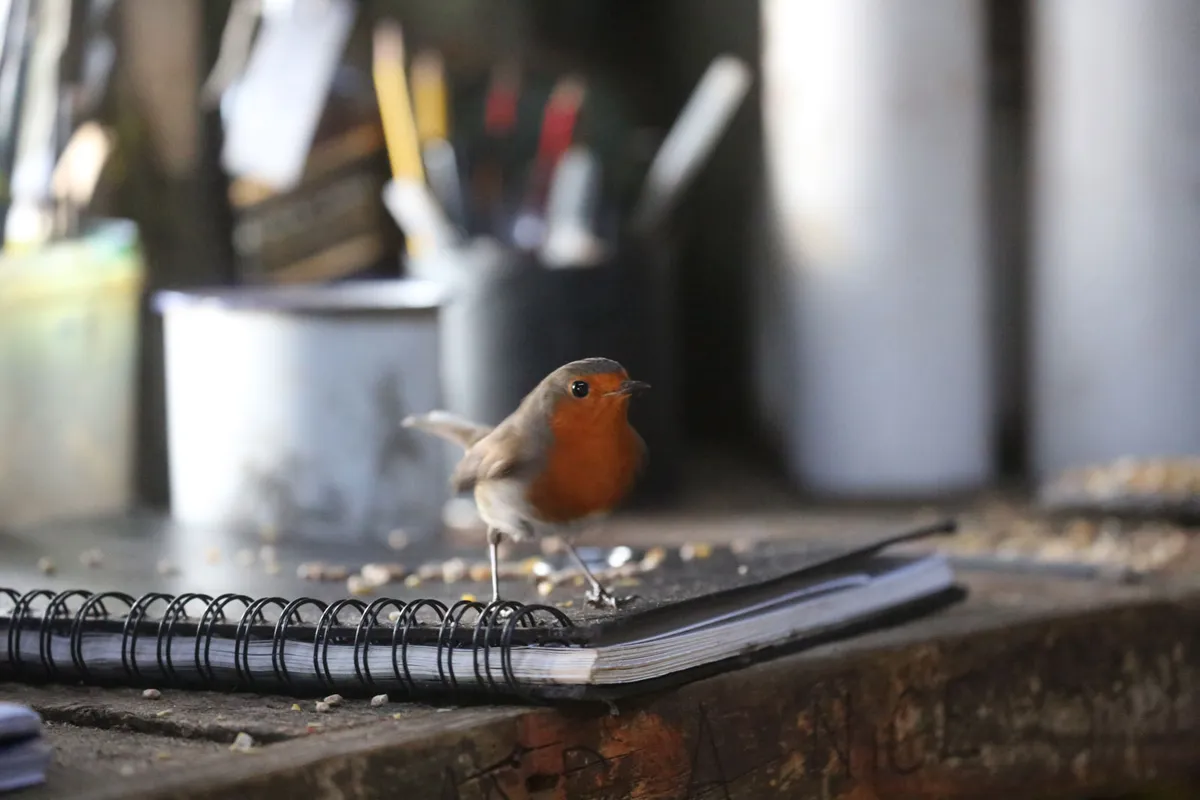
The robin wasn't my only non-human housemate. I quickly began to notice food going missing. If I left a piece of bread in a bowl and popped outside to collect kindling I'd find it gone on my return. I thought it was my mind playing tricks on me until one day, out of the corner of my eye, I spied a little tail and two tiny pink feet hanging out over the side of my tin mug. In a blink it saw me and scurried behind my bed. A fat little vole. When mice nibbled strands of wool from my favourite jumper to build multicoloured nests in my coat pocket it was frustrating, but I knew discouraging them was futile. I was on their patch so I learned to live with them instead.
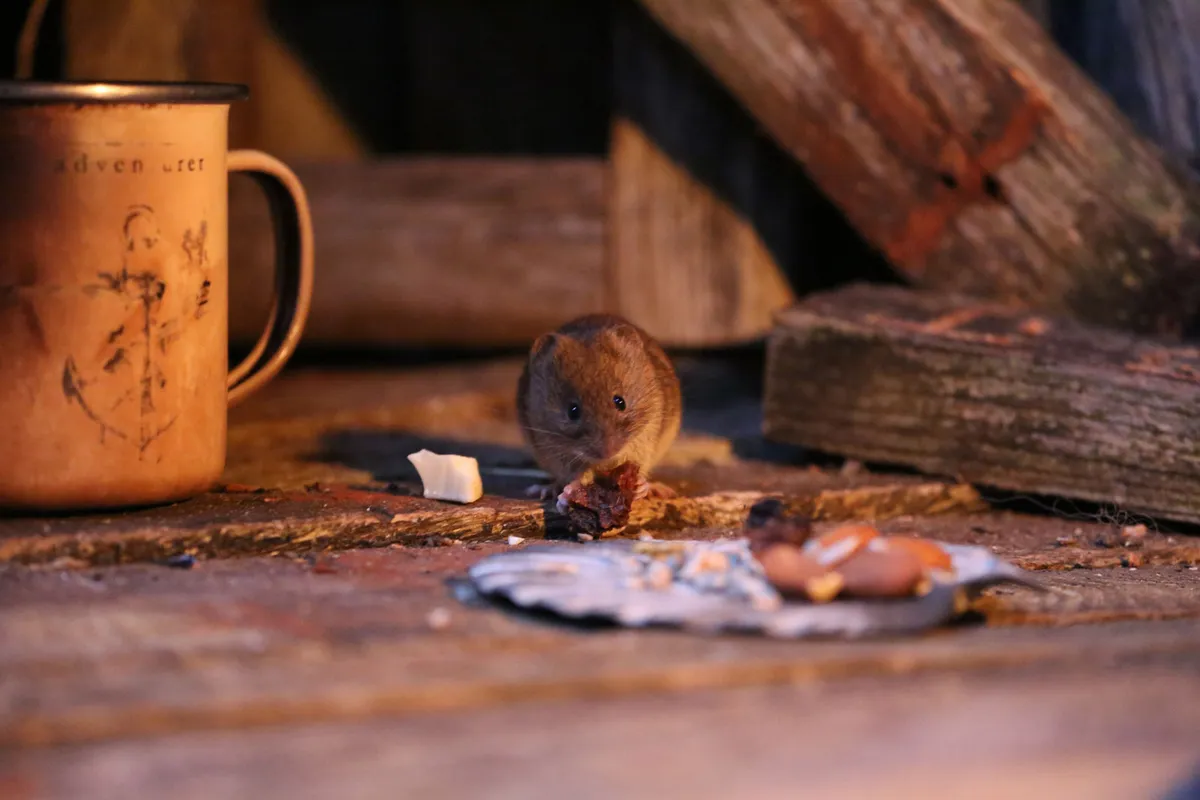
Over time I became familiar with the behaviour and quirks of the voles, mice and shrews that shared the Rabbit Hole with me. The voles were the boldest, appearing each morning, by January they trusted me enough to eat oatmeal from my hand.
I also built a bird table and made balls from chicken grain and rendered fat. It became normal to see tits of different types hopping around, vying for space. There would often be red deer silhouetted on the hill opposite or a heron squawking in the sunrise.
My time living alongside such wildlife in the Rabbit Hole was one of the most magical experiences of my life. I began to record all the different species that I'd seen, including otters, woodpeckers, eagles, common seal and yellowhammer – among others, by carving their names onto offcuts of old fence posts and nailing them to my ceiling beams. By the final week there were almost 80 wooden tiles decorating the roof.
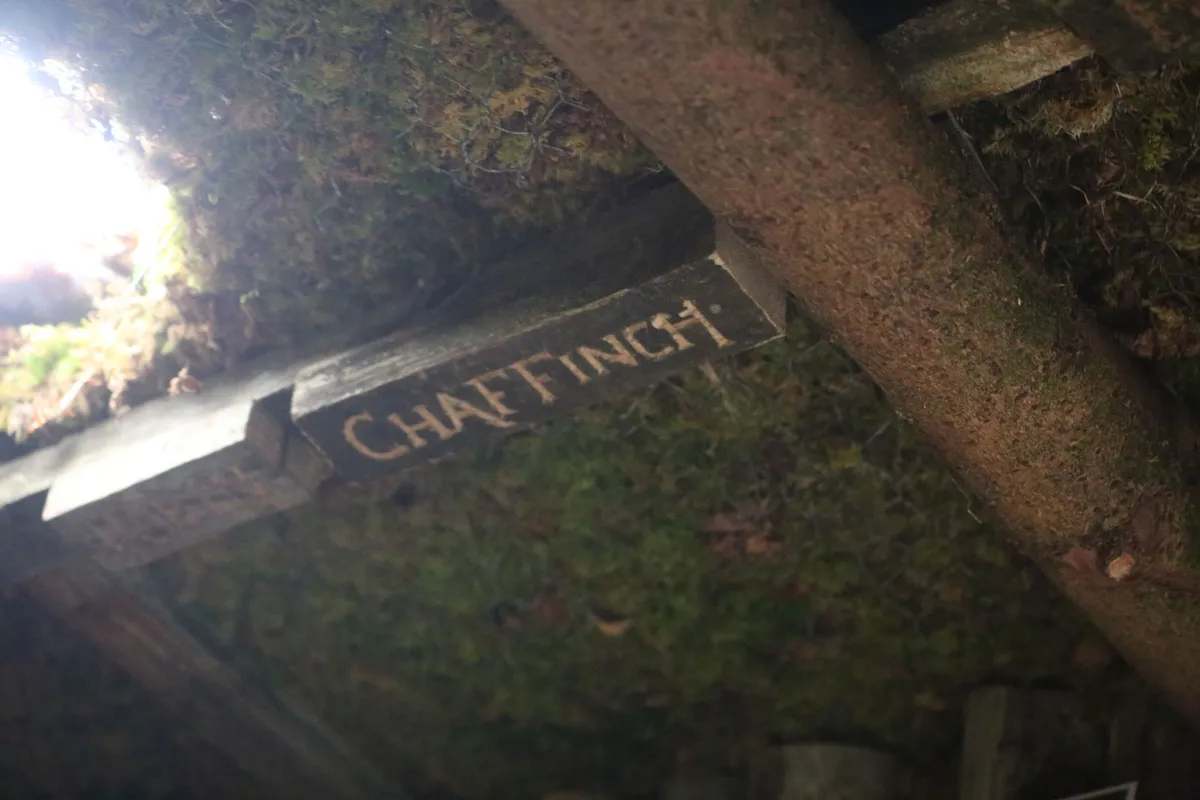
In a cruel twist, the Rabbit Hole did not survive the project. On the last morning I returned home to find the whole thing ablaze. I was devastated. I lost my diaries, my sketches and all the gifts that I'd treasured throughout the year to remind me of home. Yet the most upsetting thing was losing the house itself, a sanctuary and place connected to nature. The Rabbit Hole was my biggest work of art and I'd put my soul into it.
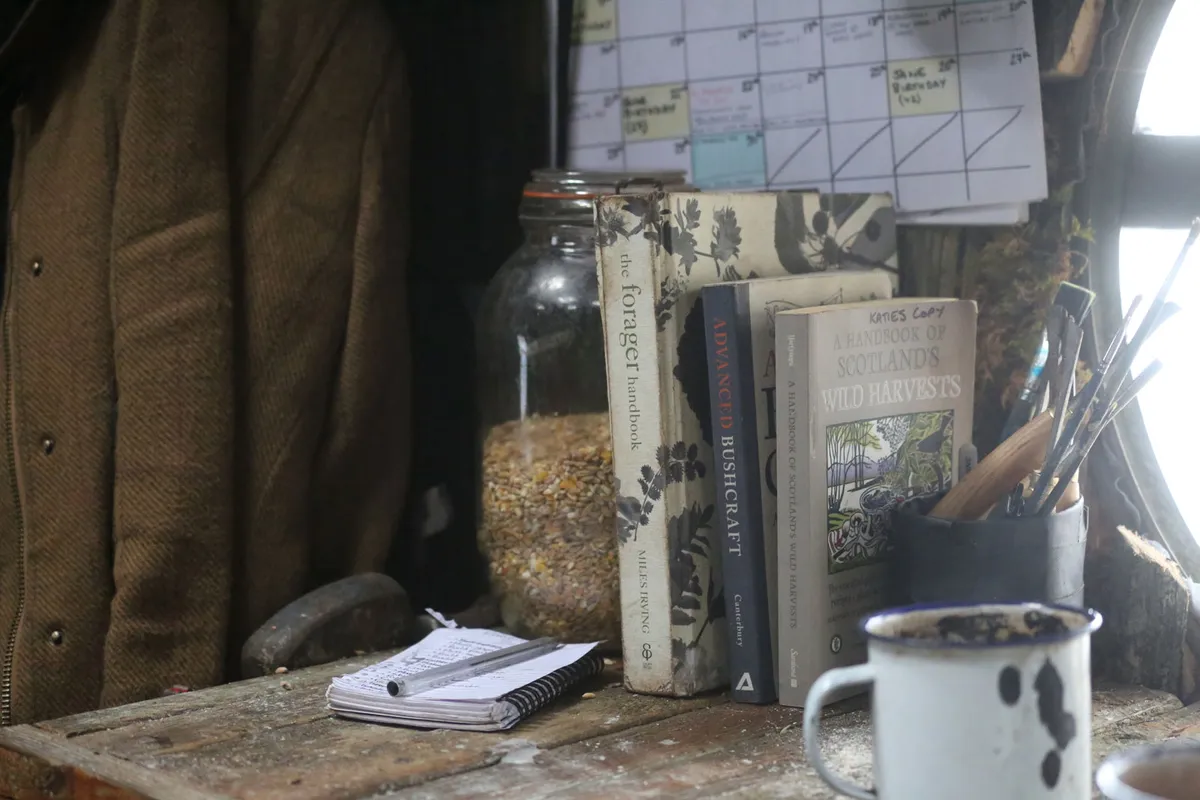
Heading home
Strangely though, as time has passed, I've come to see the loss as a good thing – perhaps, if it had remained I would have found it hard to leave. My only regret is that the beautiful woodland I tried so hard not to change was scorched by the fire. I had hoped to leave it as bothy for walkers, but with the Rabbit Hole gone I lost my tie to the Eden landscape. I was ready to go home.
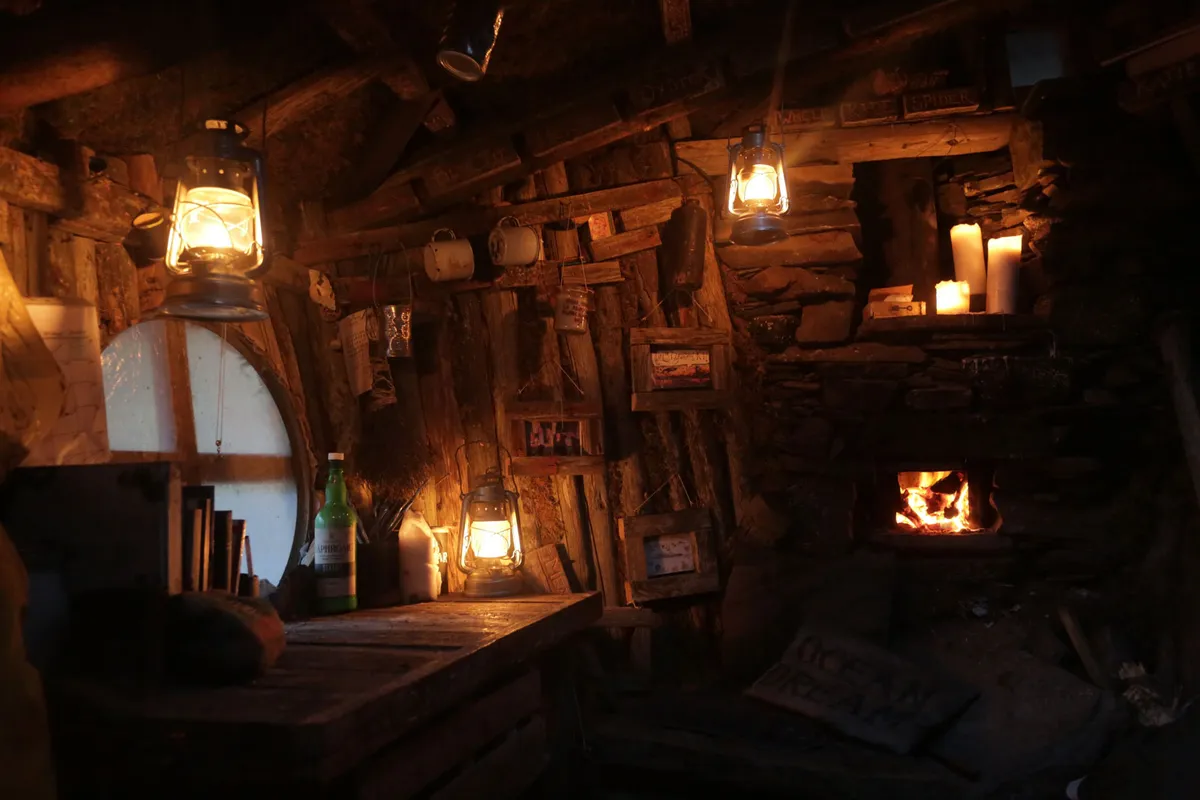
With a tearful goodbye to the animals (who were rehomed locally) we took a final walk through the woods to the perimeter gate. When you've been away from modern life for a year, it feels surreal for the end day to finally arrive. We were whisked to a local castle hotel and reunited with modern conveniences such as light switches, hot showers and stairs. It was hard to process it all. My first glimpse of myself in a full-length mirror was a shock. My body had become muscular and strong after a year of hiking through woodland, carrying animal feed and chopping wood, completely changing my shape. Even my wrists and hands had bulked up with the twice-daily routine of milking six goats.
Back to reality
Returning to the 'real world' was completely overwhelming. The renewed joy of food was tempered by the wastefulness of modern life. Even vegetable peelings and bones were used in Eden cooking. The pressure of emails, phone calls and social media also made me anxious. The political news was particularly shocking.
After a few days 'decompression' I was reunited with my family and Rob and we returned to Skye. To be back home with my loved ones after such a long time was a high that's impossible to describe.
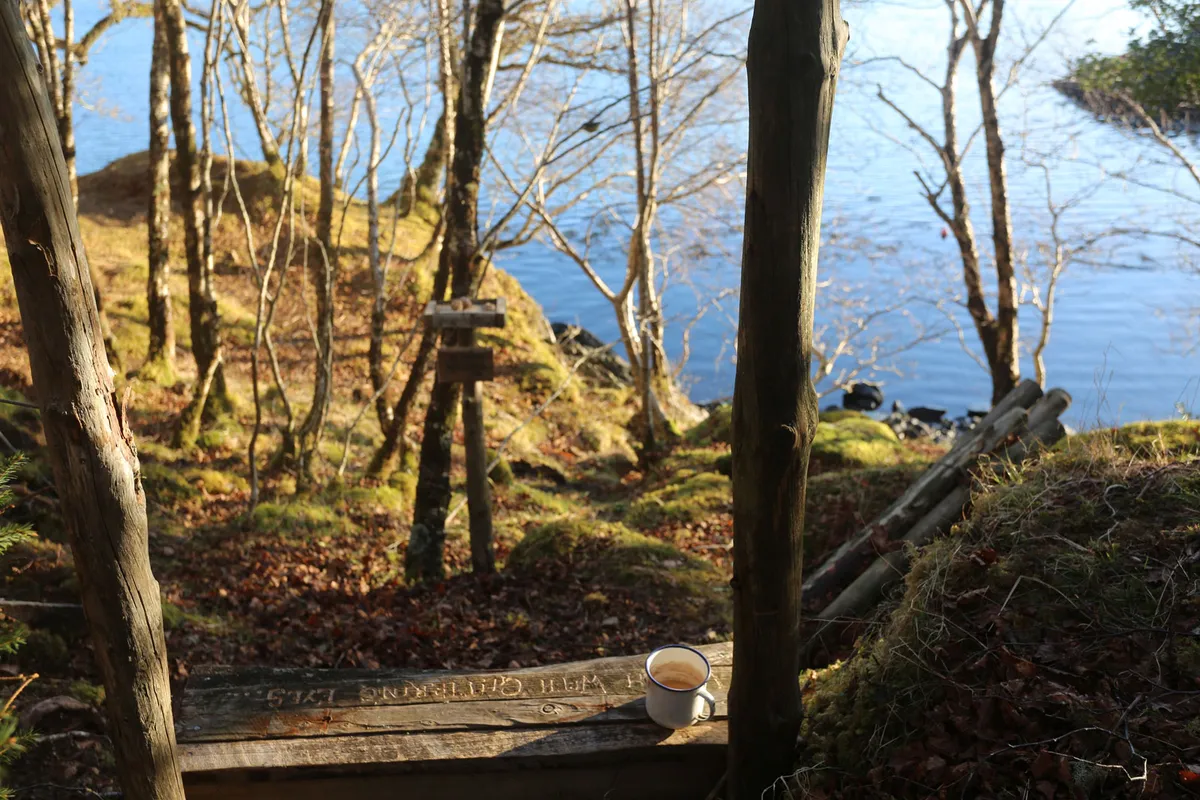
Spending a year in Eden was the hardest thing I've ever done, but it was also one of the most rewarding. The experience taught me to how to appreciate a slower pace of life and enjoy small simple moments which bring joy. Coming back to my crofting community with experience of raising livestock was special too. Though I'm only a beginner, I want to learn more and become a useful helper to my friends and neighbours. I'm also looking forward to the day when I'm settled enough to have my own naughty pigs.